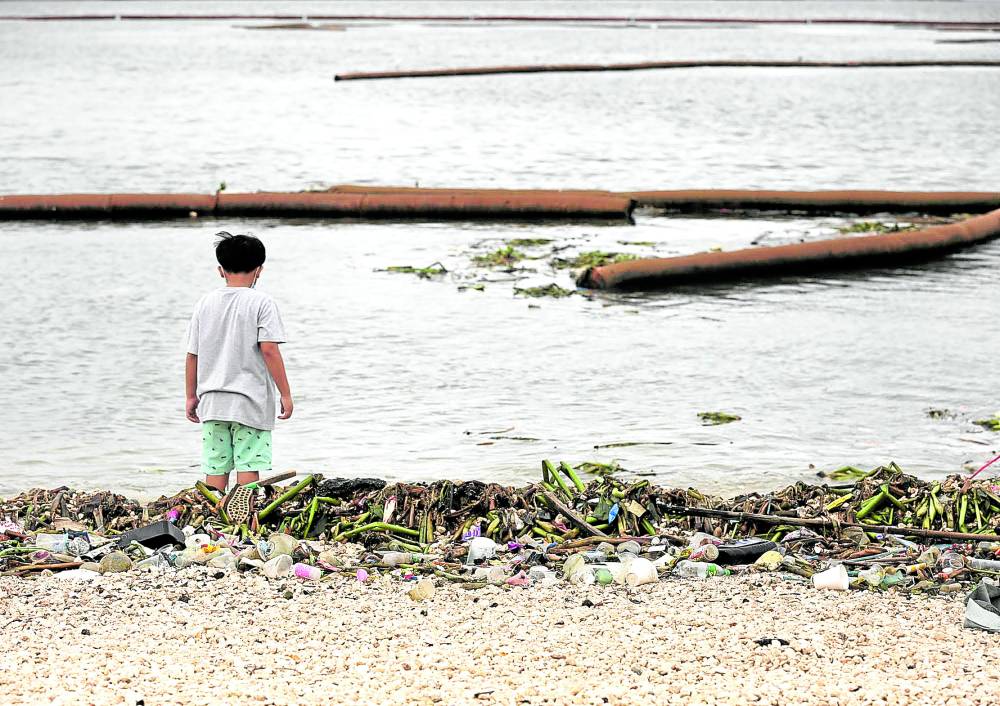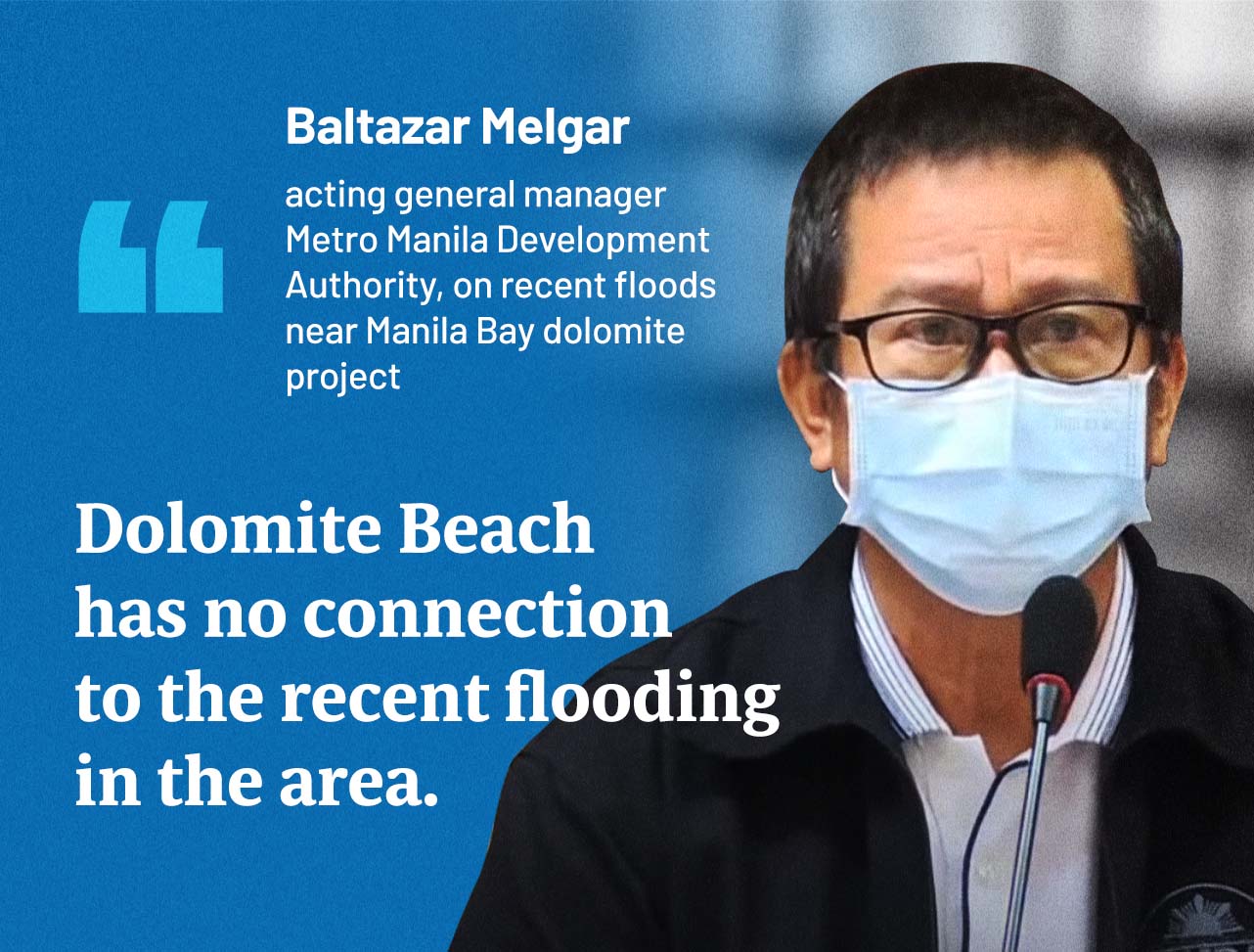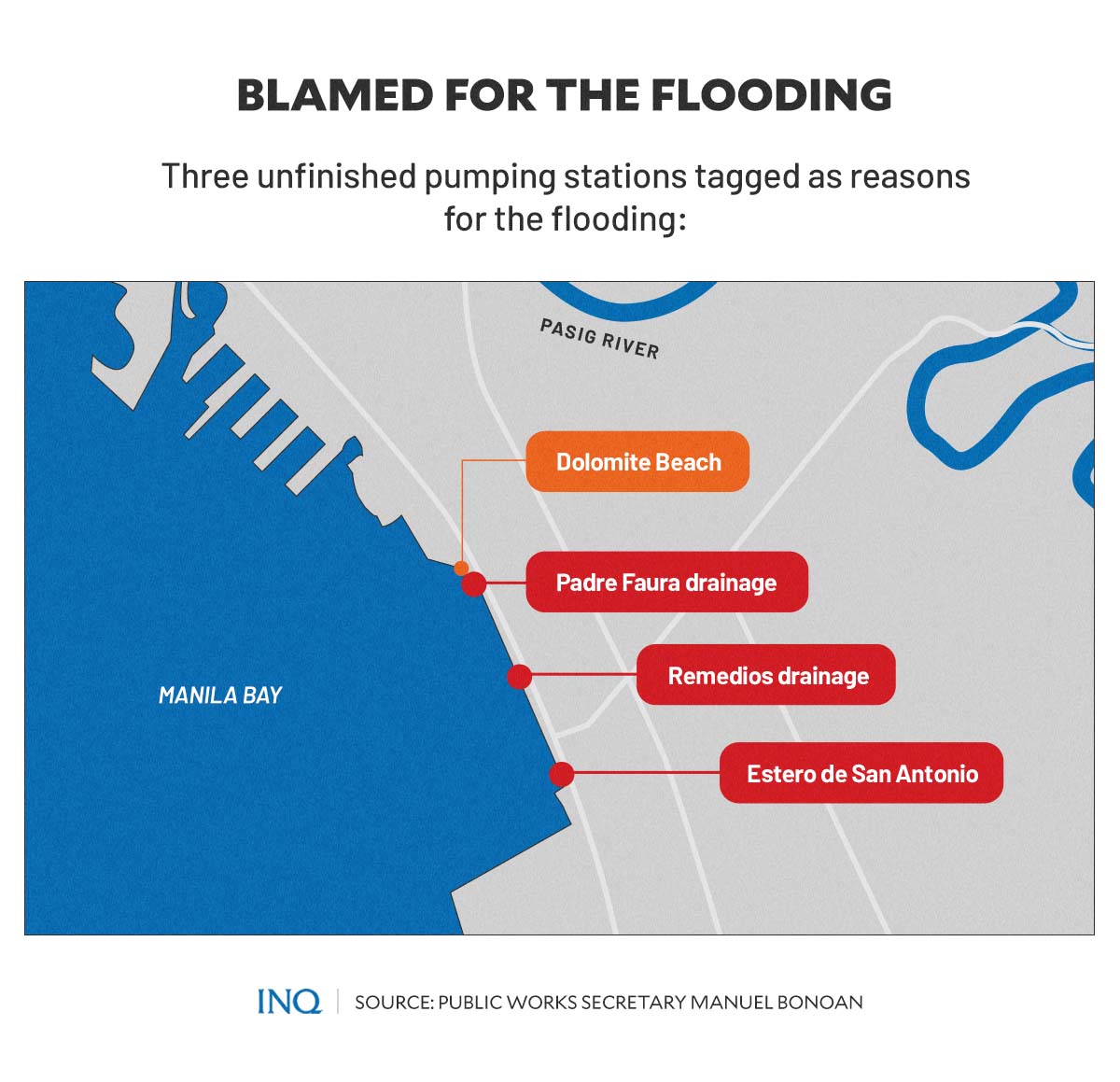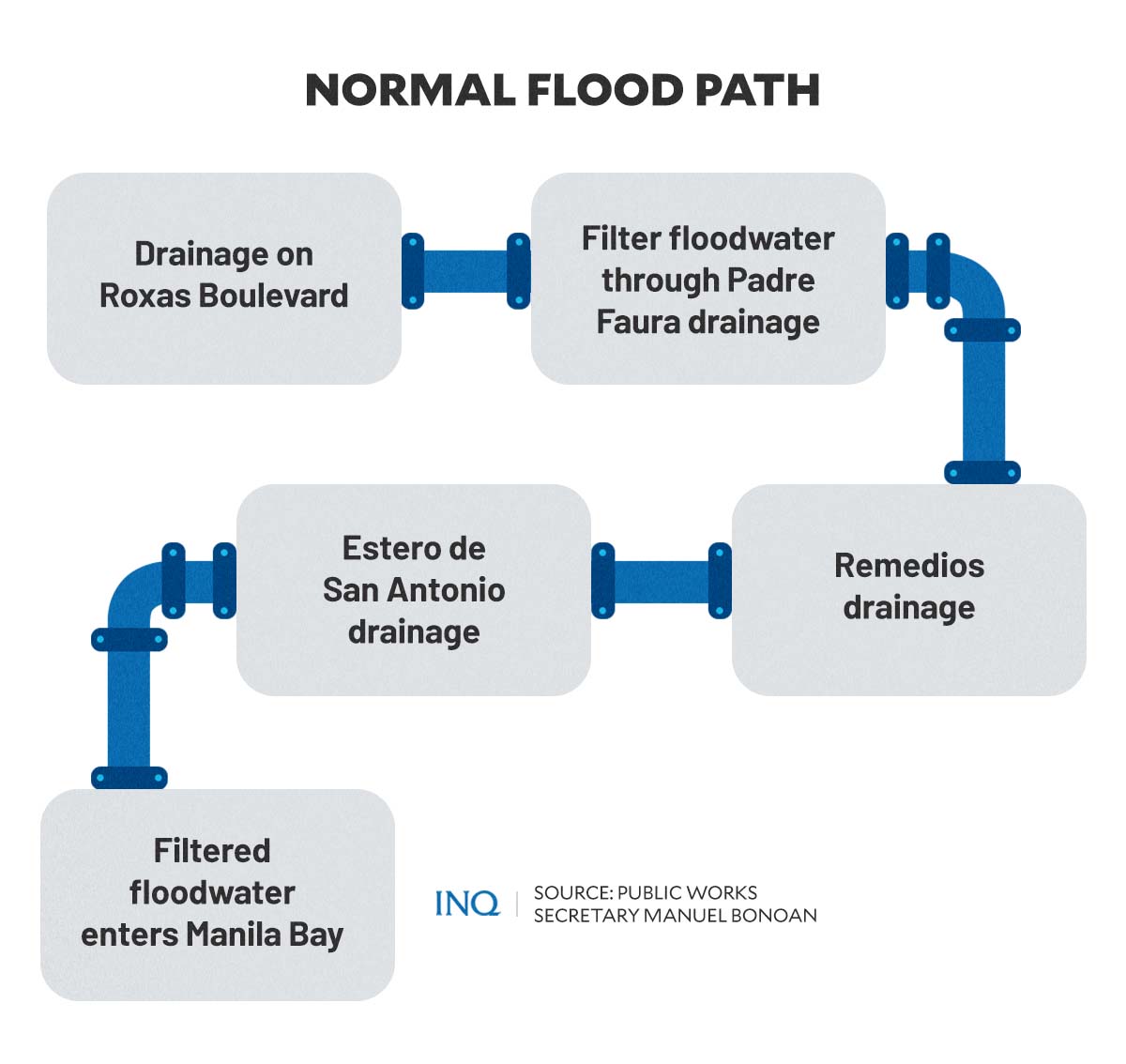Tip of the iceberg: Dolomite beach and flooding in Manila

Garbage litters the Dolomite Beach in Manila a day after heavy rains caused flooding on Taft Avenue and surrounding streets. RICHARD A. REYES/FILE PHOTO
(First of two parts)
MANILA, Philippines—Amid the recent heavy downpour in Metro Manila, the Manila Bay Dolomite Beach has been again brought into the spotlight as it has been blamed as one of the causes of flooding in several Manila roads.
Last week, localized thunderstorms led to gutter-deep flooding in several parts of Manila, including areas along Taft Avenue, Kalaw, Quirino, United Nations Avenue, and Pedro Gil.
While an earlier news report cited the Metropolitan Manila Development Authority (MMDA) saying that the flooding was caused by the controversial Manila Baywalk Dolomite Beach project, MMDA acting general manager and flood control director Baltazar Melgar pointed out a different cause.
In an interview, Melgar clarified that the flooding was partly caused by the unfinished pumping stations and pipelines near Dolomite Beach, three main drainage outposts: the Faura and Remedios drainage systems, and the Estero de San Antonio Abad.
“Dolomite Beach has no connection to the recent flooding in the area,” Melgar said.
“The reason why flood water subsided slowly during heavy rains last Friday was the ongoing construction of three pumping stations and a pipeline by the Department of Public Works and Highways (DPWH), which is expected to be completed by October,” he added.
READ: Flooding not due to dolomite beach – MMDA
According to Melgar, the three main drainage outposts, which have been closed due to repairs conducted by the Department of Public Works and Highways (DPWH), are responsible for draining floodwaters to Manila Bay.
With the closure of those three pumping stations and pipelines, he explained, the floodwater had slow subsidence due to its diversion through a farther route—through the Balete Pumping Station to Pasig River instead of being discharged directly into Manila Bay.
“For now, [the construction of pumping stations and pipelines] is not yet done, so there was a slow subsidence of floodwater,” he said in Filipino.
“The floodwater subsided slowly. The travel time was longer,” he added.
‘Required’ construction
In an interview over Teleradyo, Public Works Secretary Manuel Bonoan likewise cited the unfinished pumping stations and pipelines as a cause of the recent flooding in areas in Manila.
“Because the pumps here still have an STP (sewage treatment plant) that must be built to filter the run of water coming from the internal drainage on Roxas Boulevard so that the water that will be dumped into Manila Bay will be clean,” he said.
“The water cannot be directly disposed of immediately, in accordance with the mandamus of the Supreme Court that Manila Bay should not be polluted,” he added.
READ: Flooding on Taft Avenue blamed on unfinished pumping stations near dolomite beach
In December 2008, the Supreme Court issued a writ of continuing mandamus directing 13 government agencies to clean up, rehabilitate and eventually preserve Manila Bay.
READ: What happened to SC order to save Manila Bay?
“The three pumping stations near Dolomite Beach need to have enhanced pump capacity because the DENR (Department of Environment and Natural Resources) required us to extend the pipes going to Manila Bay so that the Dolomite Beach will not be polluted,” Bonoan said, adding that the repair for the pumping station is a tripartite activity among the DPWH, the MMDA, and the DENR.
“Their requirement is that we have to extend the pipes to 300 meters. It must be a long way from where the water needs to be dumped from here on Roxas Boulevard to Manila Bay,” he continued.
‘Lack of foresight’
The constructions and additional development needed for the pumping stations and pipelines near Dolomite Beach are expected to be completed by mid-to-late September.
READ: MMDA: Flood control projects ‘substantially completed’ this year
While the repairs are ongoing, the MMDA said they would coordinate with the DPWH to have a mobile pump in the affected areas to discharge floodwater directly to Manila Bay.
“These storm waters can be safely discharged directly into the Manila Bay because it can be diluted.”
However, for lawyer Rose-Liza Eisma-Osorio, legal and policy director of Oceana—a nonprofit international advocacy organization dedicated to protecting the world’s oceans—the decision to close three pumping stations and pipelines all at once, considering the delays in construction and the rainy season, “reflects the lack of foresight.”
“This clearly reflects the lack of foresight and solid planning of critical infrastructures,” Eisma-Osorio told INQUIRER.net in an email.
“The heavy rainfall is already expected during every rainy season. This must be taken into account by responsible government agencies,” she added.
The rainy season in the country, according to the Philippine Atmospheric, Geophysical and Astronomical Services Administration (Pagasa), is from June to November.
Dangerous, illegal reclamation projects
Although officials denied allegations that Dolomite Beach caused the flooding, Oceana said it believes that the beach reclamation project would still lead to natural hazards, such as flooding, in the long run.
Previous studies have shown that dump-and-fill activities—such as what was done to put in place the Dolomite Beach—would exacerbate Manila Bay’s vulnerability to environmental hazards and extreme weather events, like flooding, storm surges, land subsidence, and liquefaction.
As a result, these projects would endanger the lives of millions of residents along the Manila Bay coastal areas.
“According to experts, Manila Bay is also not safe for reclamation and similar coastal development activities due to the existence of many natural hazards, such as land subsidence (sinking), flooding, and storm surges brought about by stronger typhoons,” Eisma-Osorio said.
“We are now seeing this in the recent flooding in Manila even if there was no typhoon,” she explained.
“We cannot ignore the fact that reclaiming our coastlines in Manila Bay is like putting a plug on a bathtub full of water and closing the natural outflow of water towards the bay.”
According to Eisma-Osorio, there are 27 proposed and ongoing dump-and-fill or reclamation projects along Manila Bay. These projects, aside from putting the lives of residents along the coastal area at risk, also threaten critical coastal habitats which provide fisheries and aquatic resources for food and livelihood.
“Government admits that the Dolomite Beach project was not part of the Manila Bay long-term plan. Why was it allowed and allow hundreds of millions of taxpayers’ money to go down the drain?”
In a budget deliberation at the House of Representatives in 2020, Environment Undersecretary Jonas Leones admitted that the controversial artificial beach is not part of the National Economic and Development Authority’s (NEDA) master plan.
“The government also admits that the process for environmental impact assessment process was not followed.”
(Next: Saving Manila Bay, the Citizen scorecard)



